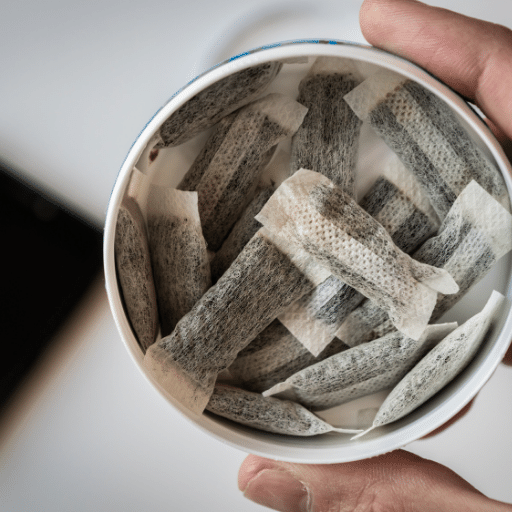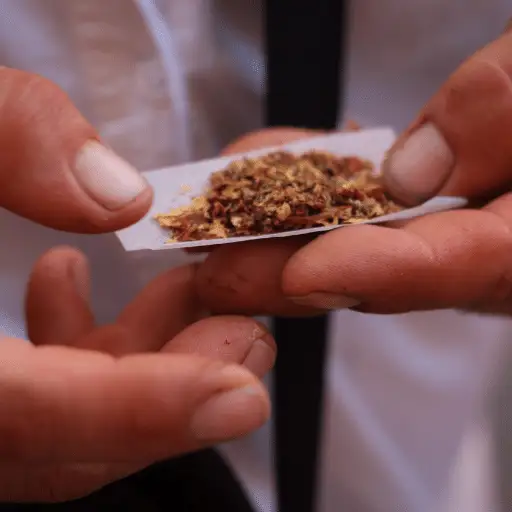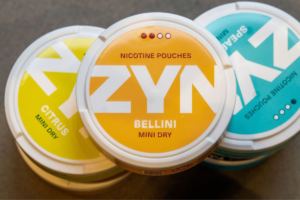Snus and snuff are different forms of smokeless tobacco although they share some similarities in their components, usage and cultural relevance. It is a moist product that is put under the upper lip rather than being a dry one thus no need of spitting. During its production, it is subjected to pasteurization so as to reduce amounts of tobacco-specific nitrosamines in it that could make it a less carcinogenic form of tobacco than others. On the contrary, snuff refers to finely grounded or shredded tobacco which can be either moist or dry. Normally, people sniff dry snuff into their nasal cavity while moist snuff is placed along gum line. While manufacturing differs from one area to another for snus, fermentation may occur during production for snuff hence affecting its chemical composition and health implications on users. They differ in terms of how they are used as well as the methods that are employed when making them thereby giving these products exceptional places on the spectrum of tobacco commodities.
What is the Difference Between Snus and Snuff?
Swedish snus versus traditional snuff
A careful consideration of their forms and how they are used is important when comparing Swedish snus with traditional snuff. It is a moist smokeless tobacco product that is placed under the upper lip. Its unique manufacturing processes such as pasteurization, which reduces harmful tobacco-specific nitrosamines set it apart from other types of snuff which come in dry or moist forms. There are two types of these; the dry one meant to be inhaled via the nose and the moist one that is inserted into the mouth along the gum line. This major variation in use and texture impacts on customer experience and probably health risks associated with each.
Using moist Swedish snuff and oral snuff
- Moist Snus (Swedish): Used extensively only within Sweden as well as Norway, it is placed under the lip for considerable periods. During its production, pasteurization process might lead to reduced amounts of nitrosamines thereby being a moderately less dangerous alternative than using usual cigarettes.
- Oral Snuff: These come either in a dried form that is usually breathed through your nostrils or exists as a wet type made to be taken by mouth.There can be variations in tobacco-specific nitrosamines because of product’s fermentation process and other manufacturing techniques.Such behaviours may also need spitting if you choose certain kinds of moist Snuffs.
In summary, key differences between these two smokeless tobacco products include method of use, physical form, and manufacturing process that determine their distinctive risk profiles and cultural significance.
How Does Nicotine Affect Snus and Snuff Users?
Nicotine Content in Snus vs Snuff
In both snus and snuff, nicotine is a crucially important addictive ingredient. However, these two products can significantly differ from each other in terms of nicotine amounts and their delivery to the users due to distinct manufacturing processes and usage methods. To comprehend these differences, one should explore three major parameters.
- Manufacturing Process: Snus is produced using pasteurization, a technique that reduces harmful nitrosamines and influences nicotine content and bioavailability. In contrast, snuff particularly the dry type undergoes fermentation process potentially affecting its levels of nicotine differently.
- Moisture Content: Nicotine absorption by the body depends largely on moistness level. Swedish snus which implies wet product placed under the upper lip permits comparatively slower but constant nicotine absorption over an extended period. Dry snuff on the other hand; gets absorbed rapidly through nasal tissues thereby resulting into quick even though short-lived rush of nicotine.
- pH Levels: The amount of acidity or alkalinity in such commodities also affects how quickly nicotine is incorporated into blood circulation by an individual’s system. A high pH may increase the speed at which nicotine is absorbed increasing vitality for the user as well. Pasteurizing snus may produce a product with pH optimized for balancing user experience with adequate delivery of nicotine.
In conclusion, whereas both snus and sniff act as means by which nicotine enters users’ bodies; different manufacturing processes, moisture contents and pH levels make them completely different experiences that vary greatly in terms of effectiveness, potency and hazard situations associated with them all. Users of snus can have a more regularized form as well as extended lasting supply of it while those who use sniff might have instant but momentary ones.
Effect of Nicotine on the Body
Upon entering the body system after its absorption, various effects are caused by nicotine through several mechanisms affecting both cognitive functions plus physical aspects generally known as nAChRs in the brain. The neurotransmitters in this case include dopamine, serotonin and norepinephrine which are released by nicotine into the brain through nicotinic acetylcholine receptor (nAChR) engagement. Some of these effects that can be caused by release of these neurotransmitters are stated as follows.
- Stimulation and Alertness: Nicotine interacts with the brain to increase alertness and cognition in the short term. This is mainly because norepinephrine, a neurotransmitter responsible for arousal and vigilance, is released.
- Mood Regulation: Dopamine is often referred to as a ‘feel good’ neurotransmitter; thus its being released can enhance mood and feelings of pleasure. This aspect of nicotine’s effect plays a significant role in its addictive potential.
- Appetite Suppression: The action of nicotine on hypothalamus has been observed to suppress appetite (Nordquist et al, 2009). In addition, it potentially leads to reduced food intake hence possible weight loss although this is not a healthy or recommended way for weight management.
- Cardiovascular Effects: On the physical side, Nicotine causes increased heart rate and blood pressure. It also stimulates the sympathetic nervous system which controls “fight or flight” response. As time goes on, these cardiovascular impacts may contribute towards increasing heart disease risk.
- Addiction and Withdrawal: Through interaction with reward system in brain nicotine can lead to addiction where there is strong urge even when smoking harms health. Symptoms such as irritability, lack of concentration, increased hunger pangs and cravings for tobacco are often experienced during withdrawal from nicotine dependence.
This will help when evaluating risks linked with its consumption since one needs to know how exactly it affects human body systems whether delivered through snus, snuff or any other form thereby emphasizing why it should be taken cautiously if need be at all.
Is There an Association Between Snus Use and Type 2 Diabetes?
Some recent researches have been looking into linking snus usage with the chance of developing type 2 diabetes mellitus. In fact, these findings show that regular intake of snus can be associated with an increased threat of type 2 diabetes. Such association has several significant determinants and comprehension of them is fundamental for consumers as well as health care providers.
- Insulin Resistance: Regular snus users might see an upturn in insulin resistance. Nicotine, the main active ingredient in snus, can interfere with insulin’s ability to control blood sugar levels adequately. This disturbance could ultimately result in greater than normal amounts of glucose in the bloodstream; a precursor to type 2 diabetes.
- Alterations to Cortisol Levels: Nicotine also affects cortisol levels which are stress hormones that may influence blood sugar regulation. Consistently elevated cortisol levels contribute significantly to insulin resistance thereby enhancing the relationship between snus and diabetes risk.
- Weight Management and Appetite Suppression: Although snus stops hunger pangs, leading one to believe it is beneficial for weight loss, it actually adds up to unhealthy weights management practices. There are poor dietary regulability and erratic mealtimes which can themselves become risks for developing type 2 diabetes mellitus.
In short, although many people describe it as a better option compared to smoking cigarettes, there are still dangers associated with using smokeless tobacco especially those connected with type II diabetes. The potential health consequences should be known by clients and potential clients before making decisions about its use while more investigations ought to take place regarding this issue so as to get comprehensive data about snuff on health globally.
Can Snus or Snuff Help in Smoking Cessation?
The role of snus in quitting smoking cigarettes
However there is a lot of controversy about the use of Snus as a tool for quitting cigarette smoking. It works best by providing nicotine without burning like normal cigarettes. This alternative form will cater for the need for nicotine satisfaction without inhaling smoke toxins. On the other hand, relying on snus itself might negate some benefits.
Substituting Cigarettes with Snuff
Similarly, snuff which is also a type of smokeless tobacco like snus can be used as an option for those who wish to quit smoking. The highly addictive drug can be delivered through non-smoking sources such as this one and hence minimize the possibilities of lung-related illnesses arising from the combustible tobacco products. However, just like in case with Snus, switching from one harmful addiction to another is possible because if someone goes through one dose or so; he may find that he has become dependent upon it with time.
Comparison with Nicotine Replacement Therapies (NRTs)
Comparing snus and snuff to other Nicotine Replacement Therapies (NRTs) such as nicotine gums and patches yields several key points:
- Methodological Differences: Some NRTs are slower acting compared to snuff and Snus thus making them less satisfying for smokers looking for an instantaneous relief from withdrawal symptoms associated with cigarettes.
- User Experience: For certain individuals trying to break free from smoking habits, using any such tobacco product that requires chewing or spitting may resemble smoking more closely than others.
- Risk of Diseases: While NRTs like gum and patches have been considered safer ways to replace cigarettes since they do not introduce combustion chemicals into the body, snuff’s danger lies in oral diseases discussed earlier that could lead up to diabetes among its users.
- Effectiveness: Similarly both traditional NRTs together with snus and snuff demonstrate varying outcomes depending on quitter’s dedication towards quitting process, support system and overall health condition.
In conclusion, snus as well as snuff offer alternatives to people who seek to quit smoking, but one must think about the risks versus the benefits of these products including other NRTs. As such, healthcare providers should support cessation attempts according to the specific circumstances and preferences of each person.
What are the Long-Term Effects of Snus and Snuff Usage?
There are many health problems associated with long-term use of snus and snuff among other smokeless tobacco products leading to cancer risk. The primary issues comprise oral, pancreatic, and esophageal cancers. Some of the things that puts one at risk include:
- Carcinogenic Chemicals: Snus and snuff being tobacco product contain Carcinogens which can cause cancer. The presence of these harmful chemicals may vary in different products but their existence is a matter of serious concern.
- Nicotine Content: Nicotine itself is not regarded as a carcinogen but it boosts addiction to these products thereby increasing exposure to carcinogens through prolonged use.
- Oral Health Impact: Smokeless tobacco products have direct contact with the oral mucosa, thus facilitating absorption of mouth carcinogens that enhances chances for oral cancers.
- Inflammation and Lesions: Continuous use of snus or sniffing tobacco may result into gum disease or leukoplakia; an oral condition characterized by formation of precancerous lesions in the mouth eventually evolving to oral cancer.
- Modulation of Cell Function: Studies indicate that nicotine and other constituents found in snus and snuff might affect cell functioning so as to promote tumor growth as well as progression towards malignancy.
All in all, long term consumption of snus and snuffle is likely to lead o increased cases f some types f cancers. Users must be aware about these risks while others should get knowledge from experts in order make informed decisions on how they can avoid such alternatives.
Understanding the Cultural Significance of Snus and Snuff
Yet, snus and snuff are used widely in some cultures due to their long-standing cultural roots that blend tradition, social identity and personal choice.
Swedish Snus
Snus in Sweden is more than just tobacco; it is part of the nation’s culture. For centuries, its use has changed but not lost its value in traditions. Some of these factors include:
- Cultural Tradition: In Sweden, using snus has been a traditional habit which people receive from generation to generation. Through such ceremonies as belonging rituals, users develop a sense of cultural identity.
- Regulatory Environment: Government control over quality and safety of snus production makes clients feel safe when consuming these products.
- Public Perception: Unlike smoking cigarettes, snus usage is perceived to be less harmful. This understanding has been supported by scientific studies as well as public health policies in Sweden.
British American Tobacco Snuff
In history, British and American societies used snuff widely among the elite class. Snuff continues to have a small following despite dwindling popularity. The aspects related to this particular cultural perception about it involve the following:
- Historical Prestige: Its exclusive appeal comes from being associated with famous personalities from years ago or even contemporary high society like collecting snuff boxes remains a pastime for many enthusiasts.
- Variety and Connoisseurship: Different kinds of flavors and textures offer room for connoisseurship which attracts individuals who appreciate subtleties in various snuffs.
- Perceived Sophistication: However, despite the adverse effects on health, some people perceive its use as being fancy but old-fashioned at times.
Thus global popularity of both snus and tobacco is influenced by threats to health arising from changes in societal norms around the world; yet they continue their long-established practices – cultural traditions, regulatory environment linked with them and peculiarities of their manifestation within smoking culture. This knowledge is important for professionals working on global markets of tobacco products.
References
-
“What’s the Difference Between Snuff and Snus?” is an online article from CStore Decisions1. It differentiates between snuff and snus, focusing on their production process. Snuff is fermented during curing, while snus is steam pasteurized to eliminate impurities. This source is accurate and credible, providing industry professionals with insights.
-
“Smokeless Tobacco Products, Including Dip, Snuff, Snus…” – This page on the FDA’s official website offers an overview of smokeless tobacco products, including snuff and snus. It is a reliable government source that provides information about FDA regulation of these products, ensuring its credibility and relevance.
-
“Characteristics of “American Snus” and Swedish…” is a scientific article published in the National Center for Biotechnology Information3. It discusses how snus differs from traditional American-style smokeless tobacco (moist snuff). The article is peer-reviewed, making it highly credible. It’s relevant as it provides a detailed comparison of snus and snuff, contributing to understanding these products.
Frequently Asked Questions
Q: What are the main differences between snus and snuff in terms of tobacco smoke?
A: Snus and snuff are both smokeless tobacco products, meaning they don’t produce tobacco smoke like cigarettes. Snus is a Swedish smokeless tobacco, often pasteurized and placed under the upper lip, not requiring spitting. Snuff, especially in the American context, refers to finely ground tobacco, which can be dry or moist and is typically inhaled or placed in the mouth. The key difference about tobacco smoke is that both are considered alternatives to smoking tobacco, aiming to reduce exposure to harmful tobacco smoke.
Q: Can the use of snacks help individuals quit smoking cigarettes?
A: Yes, some tobacco users have successfully used snus as a tool to quit smoking cigarettes. The concept behind this is harm reduction. Snus, being a smokeless tobacco product, does not involve combustion and the inhalation of tobacco smoke, significantly reducing the user’s exposure to carcinogens and other harmful chemicals found in cigarette smoke. However, it’s important to note that snus still contains nicotine and poses health risks. Therefore, while it may help some quit smoking, it is not risk-free.
Q: Are snus products associated with an increased risk of cancer, like smoking tobacco?
A: The use of snus is associated with certain health risks, but the epidemiological evidence relating snus use to cancer risk shows a less definitive link compared to cigarette smoking. Snus and other smokeless tobacco products do contain carcinogens and nicotine. Still, the lack of combustion significantly reduces the user’s exposure to a wide range of harmful chemicals commonly associated with an increased risk of cancer found in tobacco smoke. However, there is evidence suggesting a possible link to specific cancers, such as pancreatic cancer, but the risks are considerably lower than those associated with smoking tobacco.
Q: Is there an association between snus use and switching completely from smoking cigarettes?
A: Yes, there is evidence that some smokers may switch entirely to snus, effectively becoming former snus users or smokeless tobacco users. This practice is sometimes seen as a harm reduction strategy, as individuals avoid the harmful effects of smoking tobacco. Such a switch is often motivated by the desire to quit smoking but maintain nicotine intake. Epidemiological studies from Sweden, where snus is popular, indicate that the use of Swedish snus can lead to a decrease in smoking rates and related diseases.
Q: How does the nicotine content in snus compare to that in traditional chewing tobacco or smoking tobacco?
A: The nicotine content can vary widely among different smokeless tobacco products, including snus and traditional chewing tobacco. Generally, snus products have been engineered to contain varying levels of nicotine to satisfy different user preferences, potentially making them an effective alternative for those looking to switch from smoking to a less harmful form of nicotine consumption. It’s important to understand that while snus may contain nicotine levels comparable to cigarettes, the absence of combustion in smokeless tobacco use changes the nature of exposure to harmful substances.
Q: Are there any studies or epidemiological evidence relating snus use to health?
A: Numerous studies and pieces of epidemiological evidence have examined the health impacts of snus use. Research primarily from Sweden, where snus is a widespread form of tobacco use, suggests that while snus is not without health risks, it is associated with a lower risk profile than smoking tobacco. Links between snus use and specific health issues, such as cardiovascular diseases and some cancers, have been explored. Still, the consensus is that the risks are significantly reduced compared to smoking. The evidence highlights the importance of considering snus within the broader context of harm reduction strategies.
Q: What impact does stopping the use of snus have on a person’s health compared to continuing smoking?
A: Stopping snus, like quitting any tobacco product, benefits health. For individuals who switch from smoking tobacco to using snus and then cease the use of snus, the health benefits are likely to be substantial. This is mainly because they avoid the highly harmful effects of tobacco smoke. While cessation of snus use eliminates exposure to nicotine and other chemicals found in snus, those who stopped smoking and using snus altogether substantially reduce their risk of tobacco-related diseases, including various forms of cancer, heart disease, and respiratory illnesses, compared to those who continue smoking.
Q: Do snus users ever go back to smoking cigarettes?
A: Some individuals who switch from smoking cigarettes to using snacks might return to smoking cigarettes, but this varies from person to person. Factors influencing such a switchback include personal preference, perceived satisfaction from nicotine, and societal or environmental influences. However, surveys and studies, especially from regions with high snus usage, suggest that a significant portion of snus users who switched from smoking do not return to regular cigarette smoking and instead continue using snus as their primary nicotine source or quit tobacco use altogether.
Recommended Reading: Camel Snus














